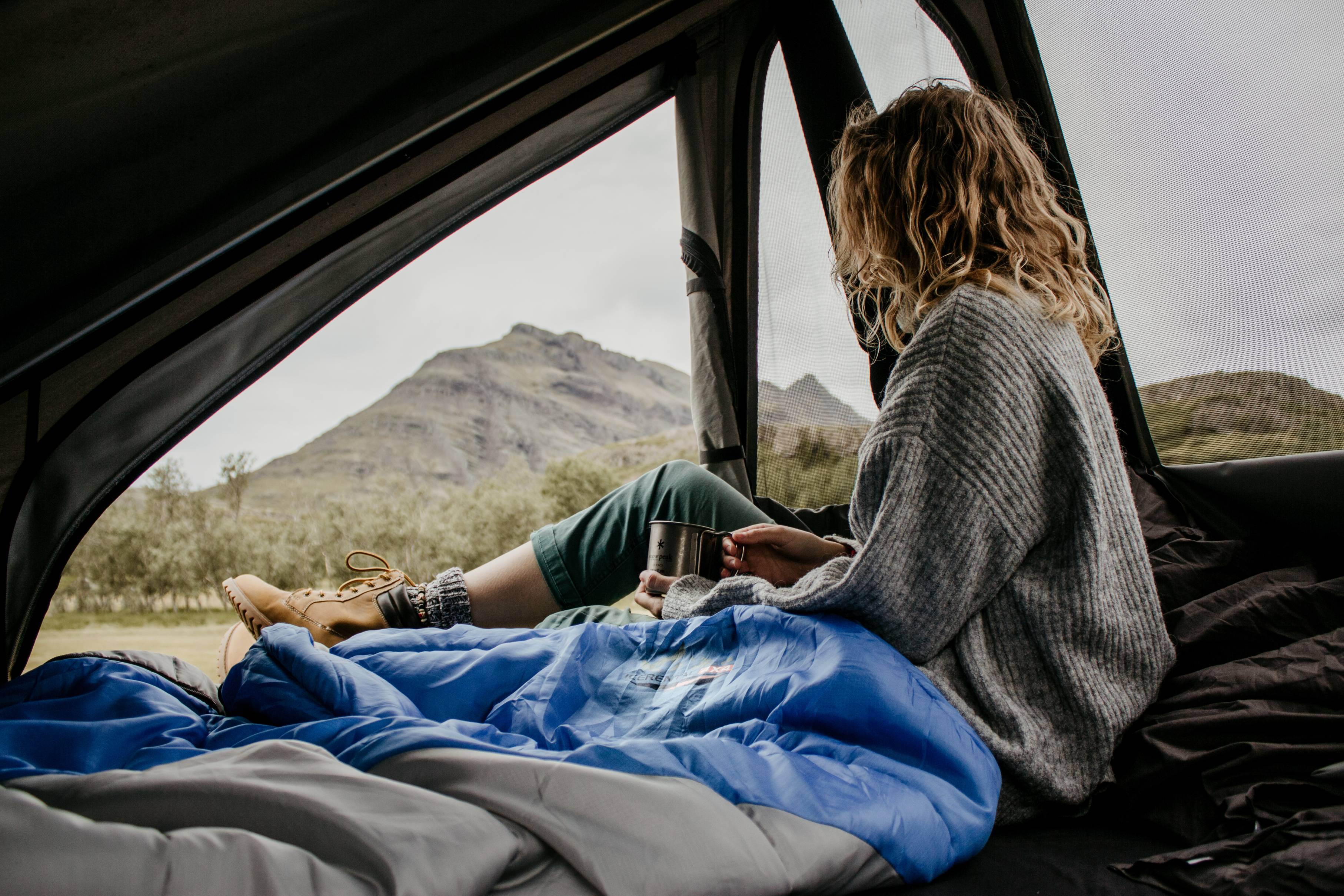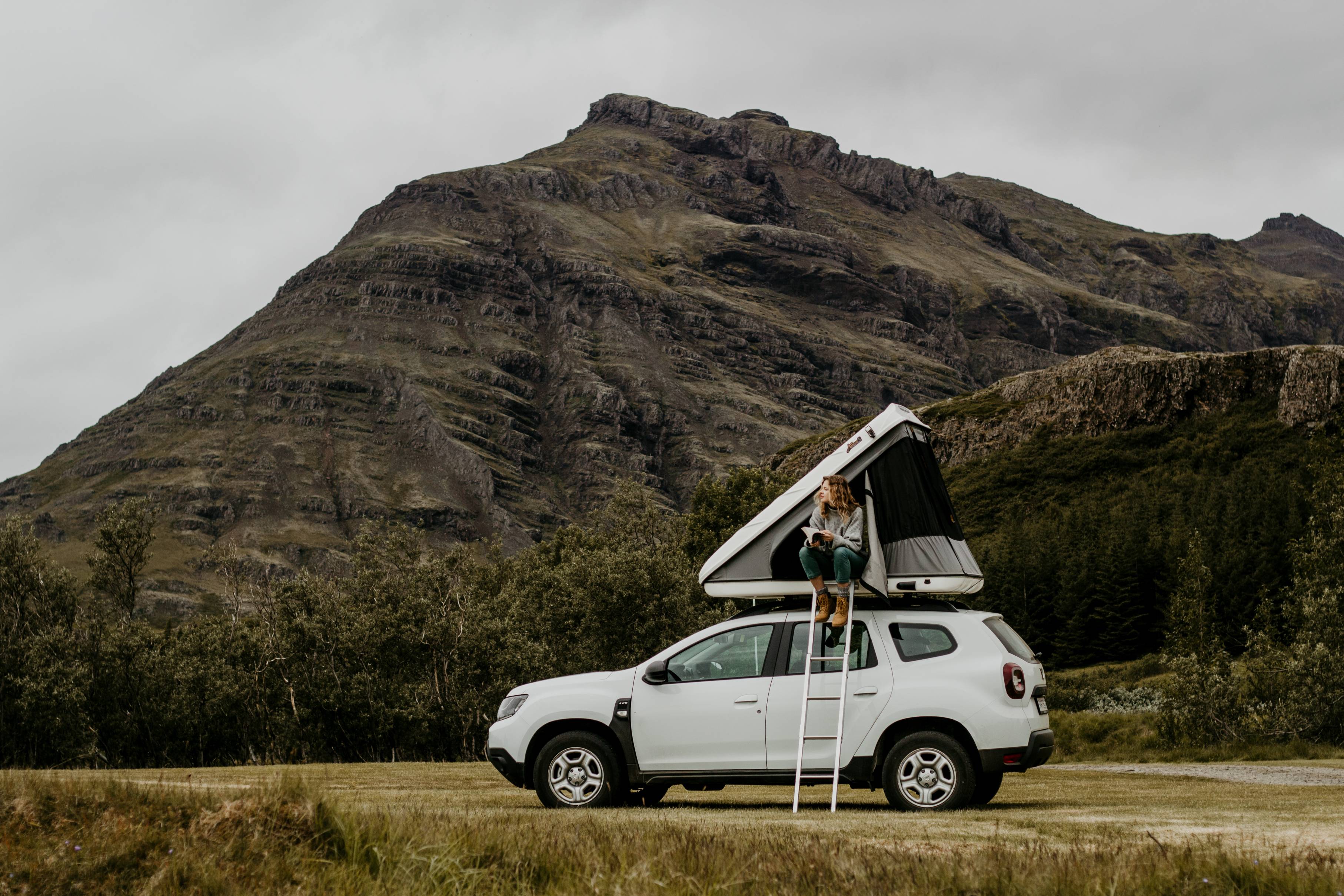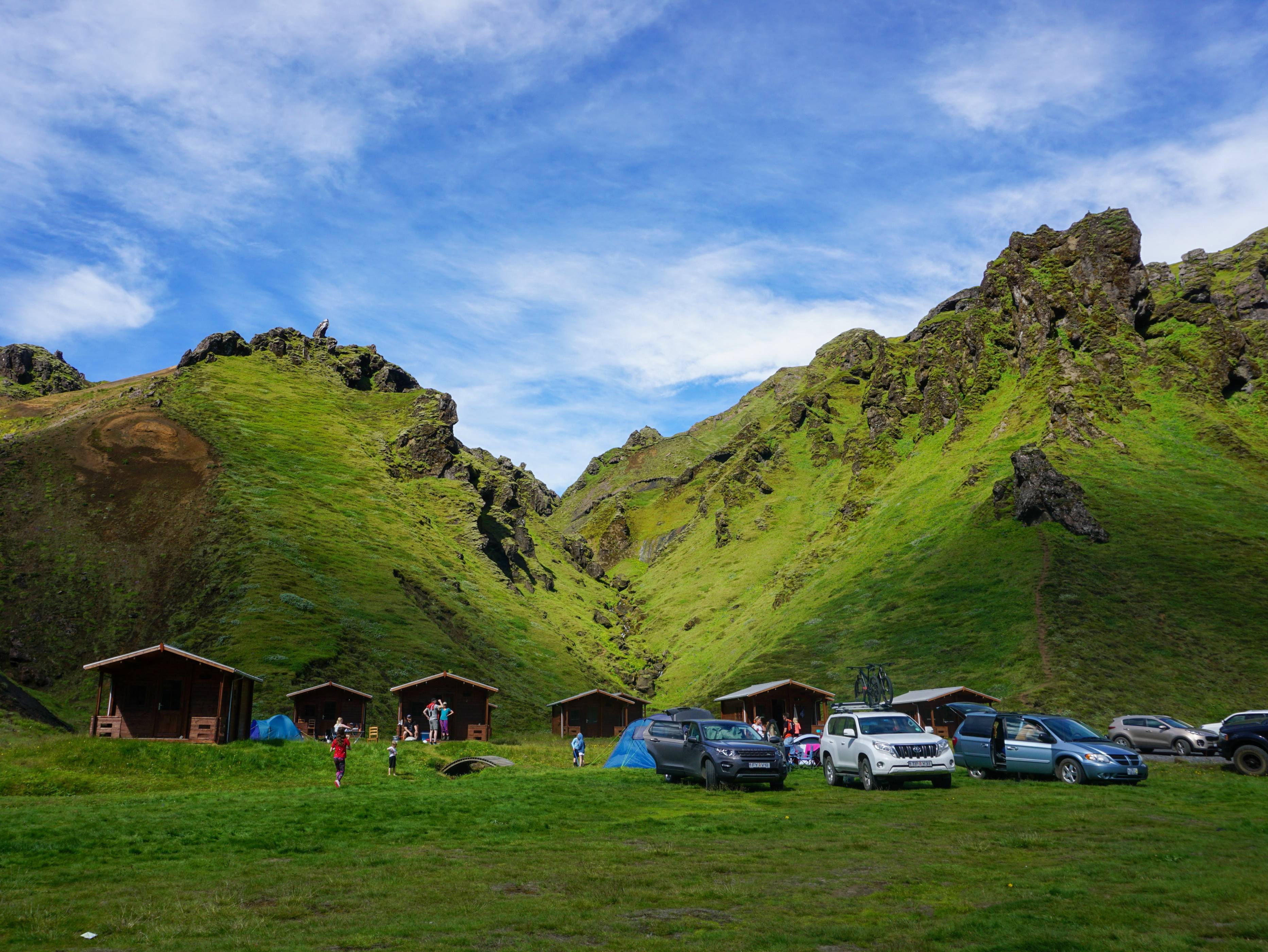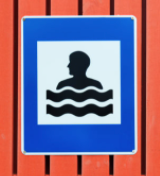Camping in Iceland: Your Complete Guide
Discover everything you need to know about camping in Iceland: rules, best times, gear checklist, cost, and where to stay. Prepare and explore with freedom.
When travelling in Iceland, camping is one of the most popular ways to explore, especially during the summer months. Below we cover where to find most campsites before you travel, what rules to follow, tips & tricks, and how to make the most of your camping journey.
Having the freedom to go wherever your heart desires in Iceland is amazing. Of course, you’ll want a rough map of destinations before you start—but if inspiration strikes along the way, you’ll be glad to travel without the tight restrictions of pre-booked accommodation. By choosing a camper or rooftop tent instead of booking every night in hotels, you get flexibility, a deeper connection with nature, and the chance to see Iceland to its fullest.
The weather in Iceland can be unpredictable, which brings challenges—wind, rain, rapidly changing temperatures, and sometimes snow even in “summer.” But for many travellers, those are part of the adventure. With good preparation, camping in Iceland can be an incredible, unique life experience.

Why Choose to Go Camping in Iceland?
- Freedom & Flexibility: Move as you wish, stay longer in spots you love, chase good weather, or change your route without being tied to hotel reservations.
- Adventure & Immersion: Sleeping under the stars, waking up to remote landscapes, hearing rivers, wildlife, and feeling closer to Iceland’s natural rhythms.
- Cost Saving Option: Accommodation in hotels and guesthouses in Iceland is among the most expensive in Europe. Camping reduces nightly costs, food costs (by cooking), and gives you more control over your budget.
- Scenery & Access: Many of Iceland’s best views, hot springs, waterfalls, and highland tracks are more accessible or more rewarding when you are camping nearby.
- Cultural Tradition: Icelanders have a strong camping culture. Families and friends often meet in campsites around the country. It’s part of how many locals spend summer—and many travellers find that camping connects them more with the people and places of Iceland.
We here at Icerental 4x4 offer a variety of 4×4 rooftop tent vehicles that are perfect for a trip around the country. Having your accommodation with you everywhere you go is both convenient and comfortable!
Though camping in Iceland can be amazing and unique, it can also be a hassle if you try to organize all equipment and plan all campsites ahead. We help lighten the load: you can rent camping gear (camping chairs, tables, GPS units, cooking equipment) to reduce what you need to pack.

Iceland Camping Rules & Laws
Here are the key legal and practical points:
- There are about 170 registered campsites in Iceland.
- Over 40 campsites are open all year round.
- Under Icelandic Nature Conservation law (Act no. 60/2013), it is illegal to spend the night in a tent trailer, camper van, caravan, motorhome or similar vehicle outside designated campsites or urban areas unless you have permission from the landowner or rights-holder.
- Traditional tent camping (for up to three tents, for one night) on uncultivated land is allowed along public routes if there is no campsite in the direct vicinity and the landowner has not posted restrictions.
- You must have permission to camp on cultivated land, near farm buildings, or on private property.
- Protected areas, national parks, and farm lands often have stricter restrictions. Always check local signage, National Park rules, and regulations before choosing a spot.
How To Camp in Iceland
Here are the major styles of camping and what to expect with each:
Tent Camping
Pitching a ground tent in designated campsites is the most straightforward. Most campsites have clean toilets, hot showers, waste disposal, potable water, sometimes kitchen shelters. Wild tent camping (outside campsites) is only legal under very specific circumstances: uncultivated land, no campsite nearby, small group (≤3 tents), one night, and not near farms or private/residential buildings. Permission may be required depending on location and land ownership.
Rooftop Tent Car
If you rent a rooftop tent vehicle, you gain mobility and ease of setup. The tent is mounted on top of the 4×4, which helps when camping in remote areas.
These vehicles often handle F-roads and rough gravel roads, giving you access to highlands and remote campsites—allowing you to visit places like Landmannalaugar, or visit Askja, north of Vatnajökull National Park. Just remember certain laws about where vehicles (including camper / rooftop tent vehicles) can stay overnight: generally only in campsites unless you have explicit permission.
Campervan & RV Camping
If you rent a motorhome in Iceland, you have built-in sleeping, cooking, and (sometimes) bathroom facilities. Great for family camping trips, remote areas, inclement weather, and more comfort. But bear in mind: many campsites require permission or have rules for motorhomes. Off-grid wild camping with a van or RV is much more restricted.

Iceland Campgrounds: What to Expect?
When you arrive at a typical Icelandic campsite, you may find:
- Basic to good infrastructure: toilets, showers (often hot), sometimes dishwashing areas or kitchen shelters
- Potable water supply
- Waste bins, recycling, greywater disposal
- Parking space (for cars, rooftop tent campers, campervans)
- Occasionally WiFi (but often limited)
- Sometimes charging stations (for phones or occasional electric needs)
- Laundry facilities (in some campsites, especially near towns)
- Information boards/maps/trails nearby
- Sometimes cafés or small shops nearby, especially near towns
Not all campsites are equal: more remote ones have far fewer amenities. Always check in advance for what you need.
What are the Best Campsites in Iceland
For a curated list of the best campsites in Iceland, with photographs, amenity ratings, and seasonal opening times, check our guide. These are ones most travellers and locals recommend for views, location, service, and value.
Important Things to Know & Budget Tips
Camping in Iceland is not free but not campsites are expensive and not all campsites have the exact same amenities.
Cost of Camping in Iceland
Basic tent‑pitch fees are often around €4‑20 per person per night, depending on location, amenities, season, and whether you’re using a tent, rooftop tent car, campervan, etc.
If you have a campervan or rent with more facilities, the fee tends to be higher. Remote or luxury campsites cost more.
How to Pay for Campsites?
Most campsites accept cash (ISK), credit/debit cards. Some remote ones may be card only.
There is a scheme called the Iceland Camping Card: this gives access to multiple campsites for one fee during the season. For budget travellers, this can save money if you plan to stay at a number of participating campsites.
Do You Need to Book Campsites in Advance?
Summer (June‑August) is peak season, especially in popular areas like the South Coast, Golden Circle, and highlands entrances and campsites may fill up quickly. Booking ahead for these is wise. At less popular campsites, first‑come, first‑served is common.
Are Iceland Campsites Open All Year Round?
Most campsites are only open in the summer and those that do remain open year round have reduced facilities and amenities.
When is the Best Time to Go Camping in Iceland
Late May until August is generally the best window: longer daylight hours, milder weather, majority of campsites open with full amenities. The Midnight Sun period (around June) means very late sunsets; bring a sleeping mask if sensitive to light.
Even in summer, weather can change fast: high winds, rain, cold nights. Be prepared.
Winter camping is possible but much more demanding. Very few campsites remain open year round (roughly 25‑30); many reduce facilities. Tent camping in winter is not recommended unless you are highly experienced, well‑equipped, and with a winterized vehicle.
Camping in Summer
Camping in summer in Iceland offers long daylight hours, nearly 24‑hour light in high summer, and larger crowds but with more reliable services.
Camping in Winter
On the other hand, when camping in winter in Iceland you will get fewer daylight hours, cold, snow, roads may be closed but you have a greater chance of seeing the northern lights.
Only select campsites are open in the winter so confirm in advance that the campsite you’ve picked out will actually be open and be ready with backup plans.
Camping Gear & Packing List
Here’s a suggested “camping essentials” checklist to prepare well:
- Warm, layered clothing: base layers, insulating layers, waterproof windproof outer shell
- Good quality sleeping bag (rated for temperatures lower than expected night minimums)
- Sleeping pad / mat (for insulation from ground)
- Tent (if using ground tent) or rooftop tent (if using rooftop setup)
- Cooking gear: portable stove, fuel, pots/pans, cooking utensils
- Lighting: headlamp, flashlight, spare batteries
- Navigation equipment: GPS, map, compass, or reliable offline maps
- Waterproof boots and socks
- Hat, gloves, scarf / buff
- Toiletries, towel, biodegradable soap
- Small broom / brush for tent, cleaning gear
- First aid kit, repair kit for gear and vehicle
- Water bottles, water filter or purification tablets if needed
- Sun protection: sunscreen, sunglasses, hat (yes, even in Iceland)
- Camera, charged devices, power bank
- Backpack / daypack for hikes
- Optional: chairs, table, extra blankets

Safety & Eco-Friendly Tips for Campers
There are a lot of factors to consider when planning your camping trip. Here are some essential safety tips to keep in mind:
- Always check the weather forecast and road conditions before driving or camping (use vedur.is for weather, umferdin.is for roads).
- In Iceland, fuel stations can be sparse in remote areas. Always carry extra fuel where possible.
- Use Leave No Trace practices: pack out what you bring, don’t disturb vegetation, avoid driving off‑road, dispose of waste properly.
- Camp only in designated campsites or permitted spots. Using non‑designated spots puts pressure on nature and may violate laws.
- For showers, swimming pools in towns are a good option if campsites don’t have facilities.
- Respect the local environment and communities. Noise down at night, respect livestock and farming properties.
- Be aware of daylight hours — in summer very late sunsets; in winter very short daylight. Plan driving/rest times accordingly.
- Make contingency plans: in remote areas, communication may be weak, weather may force route changes. Let someone know your plans.
Frequently Asked Questions:
Is it safe to go camping in Iceland?
Yes, generally it is safe. Iceland is considered one of the safest travel destinations. However, safety depends on being prepared: good gear, checking weather/roads, avoiding risky terrain, knowing where permissions are required. Wind, cold nights, storms, or sudden weather changes can pose hazards.
Is it worth getting the camping card in Iceland?
If you plan to use many campsites that participate, then yes, it often saves money and simplifies payments. Using a camping card also supports more sustainable, organized camping.
When are Iceland campsites open?
Most campsites are open from early June through mid‑September, with many closing off in October. Over 40+ campsites are open all year round. Facilities in off‑season are limited in many cases.
Can I camp in Iceland in the winter?
Yes, but with a heavy dose of caution. Only select campsites are open year‑round, others are seasonal. Winter camping (especially tent) is challenging because of cold, wind, snow, limited facilities, and reduced daylight. Winter camping is more feasible with a campervan or 4×4 with rooftop tent or a heated RV.
Ready for a Great Camping Trip Around Iceland?
If you’re inspired to explore Iceland by camping, we make it easy. Check out our essential driving tips, and when you're set, book your car rental to begin your adventure.
(Updated on October 18, 2025)
